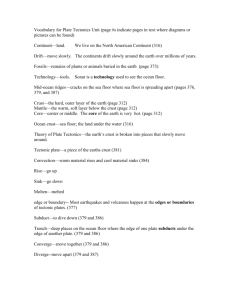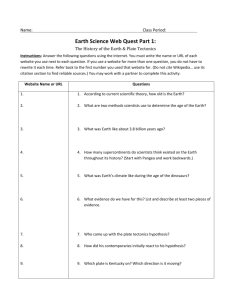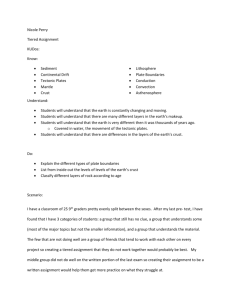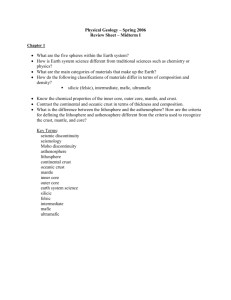Vocabulary - Effingham County Schools
advertisement
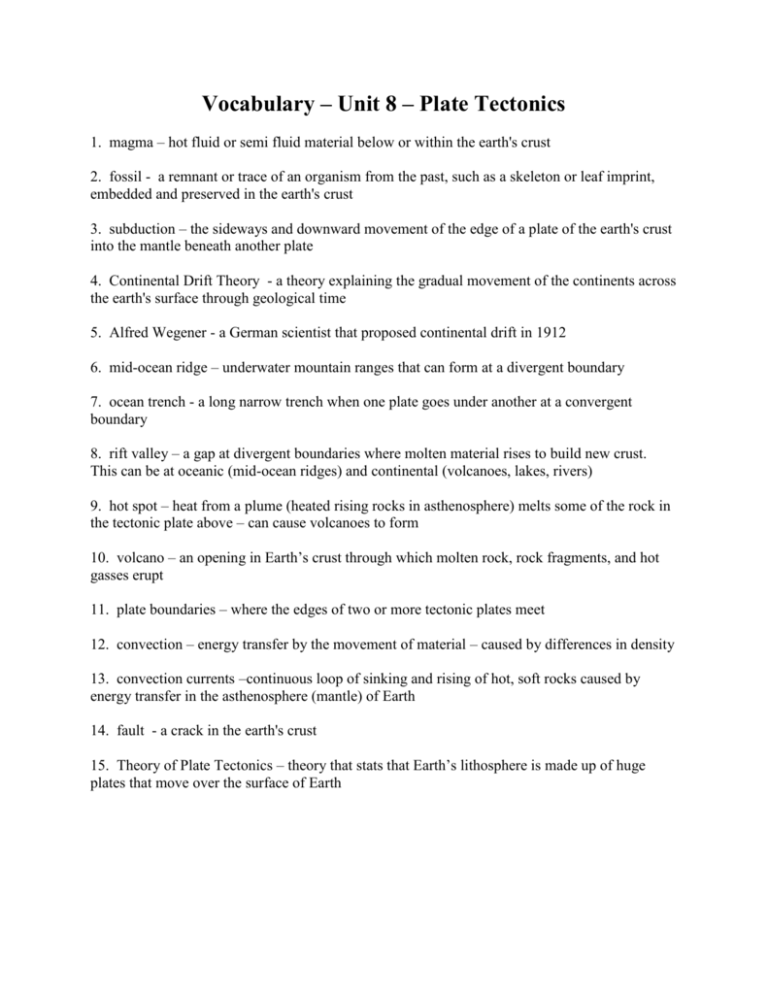
Vocabulary – Unit 8 – Plate Tectonics 1. magma – hot fluid or semi fluid material below or within the earth's crust 2. fossil - a remnant or trace of an organism from the past, such as a skeleton or leaf imprint, embedded and preserved in the earth's crust 3. subduction – the sideways and downward movement of the edge of a plate of the earth's crust into the mantle beneath another plate 4. Continental Drift Theory - a theory explaining the gradual movement of the continents across the earth's surface through geological time 5. Alfred Wegener - a German scientist that proposed continental drift in 1912 6. mid-ocean ridge – underwater mountain ranges that can form at a divergent boundary 7. ocean trench - a long narrow trench when one plate goes under another at a convergent boundary 8. rift valley – a gap at divergent boundaries where molten material rises to build new crust. This can be at oceanic (mid-ocean ridges) and continental (volcanoes, lakes, rivers) 9. hot spot – heat from a plume (heated rising rocks in asthenosphere) melts some of the rock in the tectonic plate above – can cause volcanoes to form 10. volcano – an opening in Earth’s crust through which molten rock, rock fragments, and hot gasses erupt 11. plate boundaries – where the edges of two or more tectonic plates meet 12. convection – energy transfer by the movement of material – caused by differences in density 13. convection currents –continuous loop of sinking and rising of hot, soft rocks caused by energy transfer in the asthenosphere (mantle) of Earth 14. fault - a crack in the earth's crust 15. Theory of Plate Tectonics – theory that stats that Earth’s lithosphere is made up of huge plates that move over the surface of Earth


